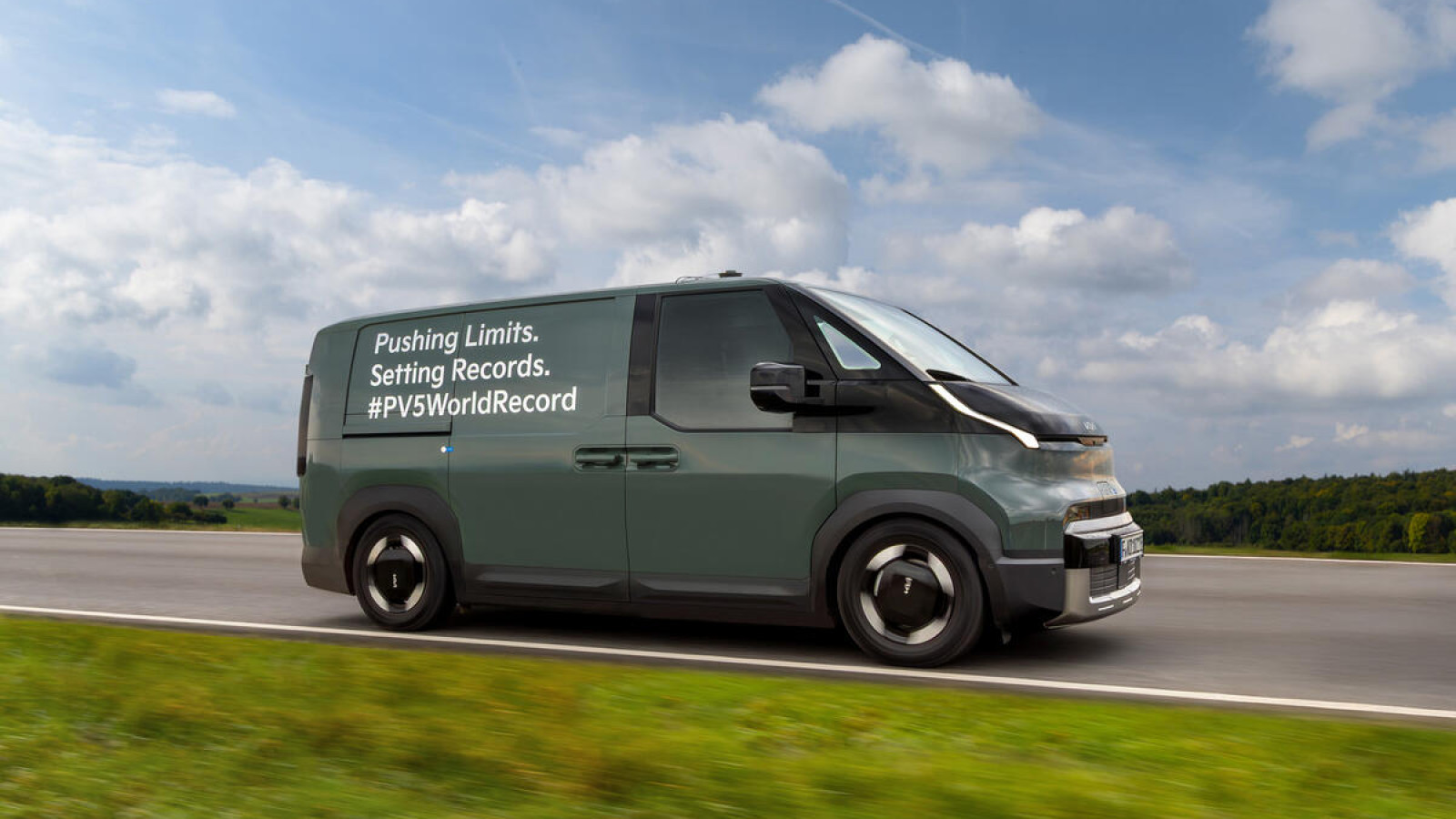
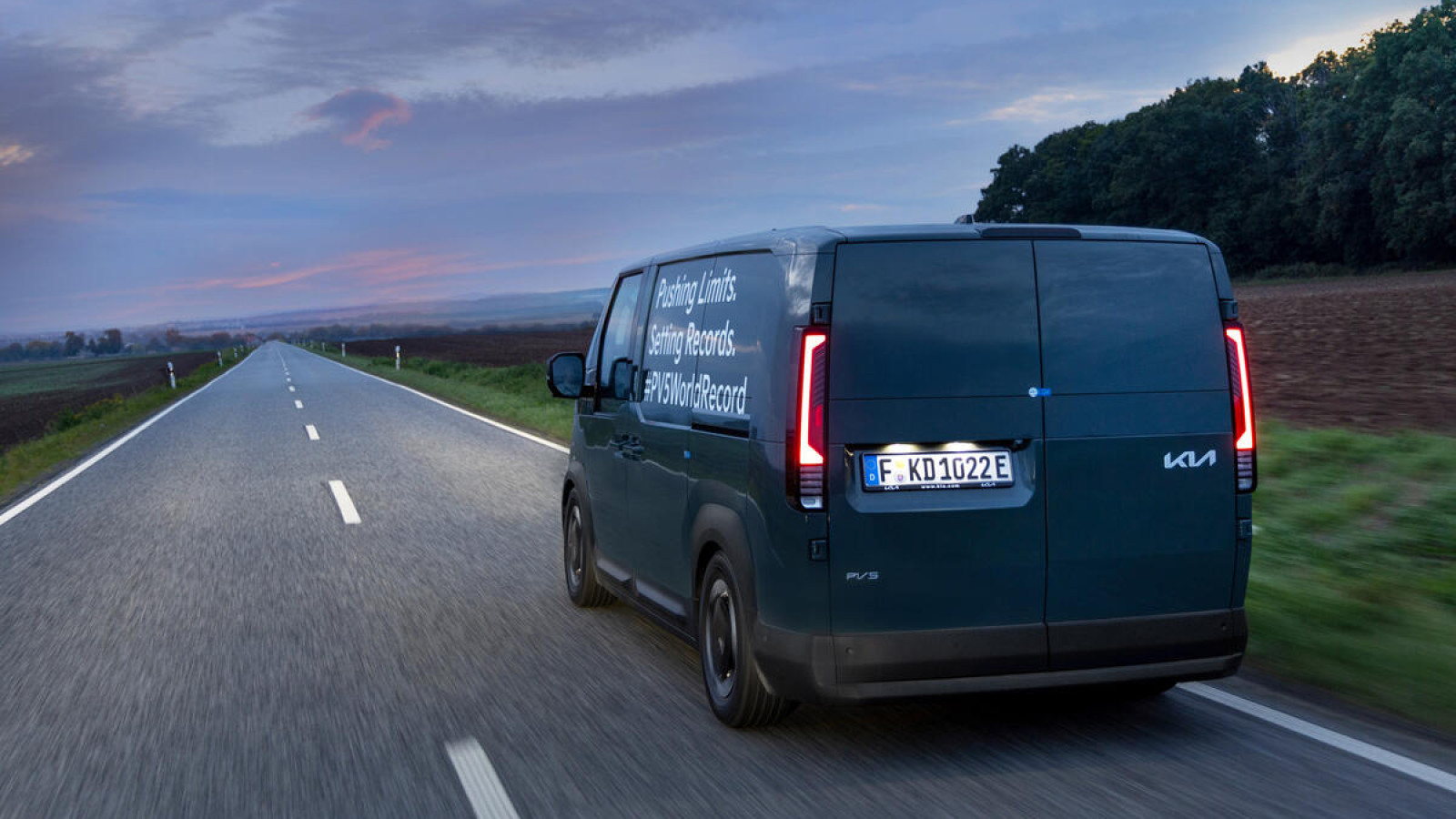
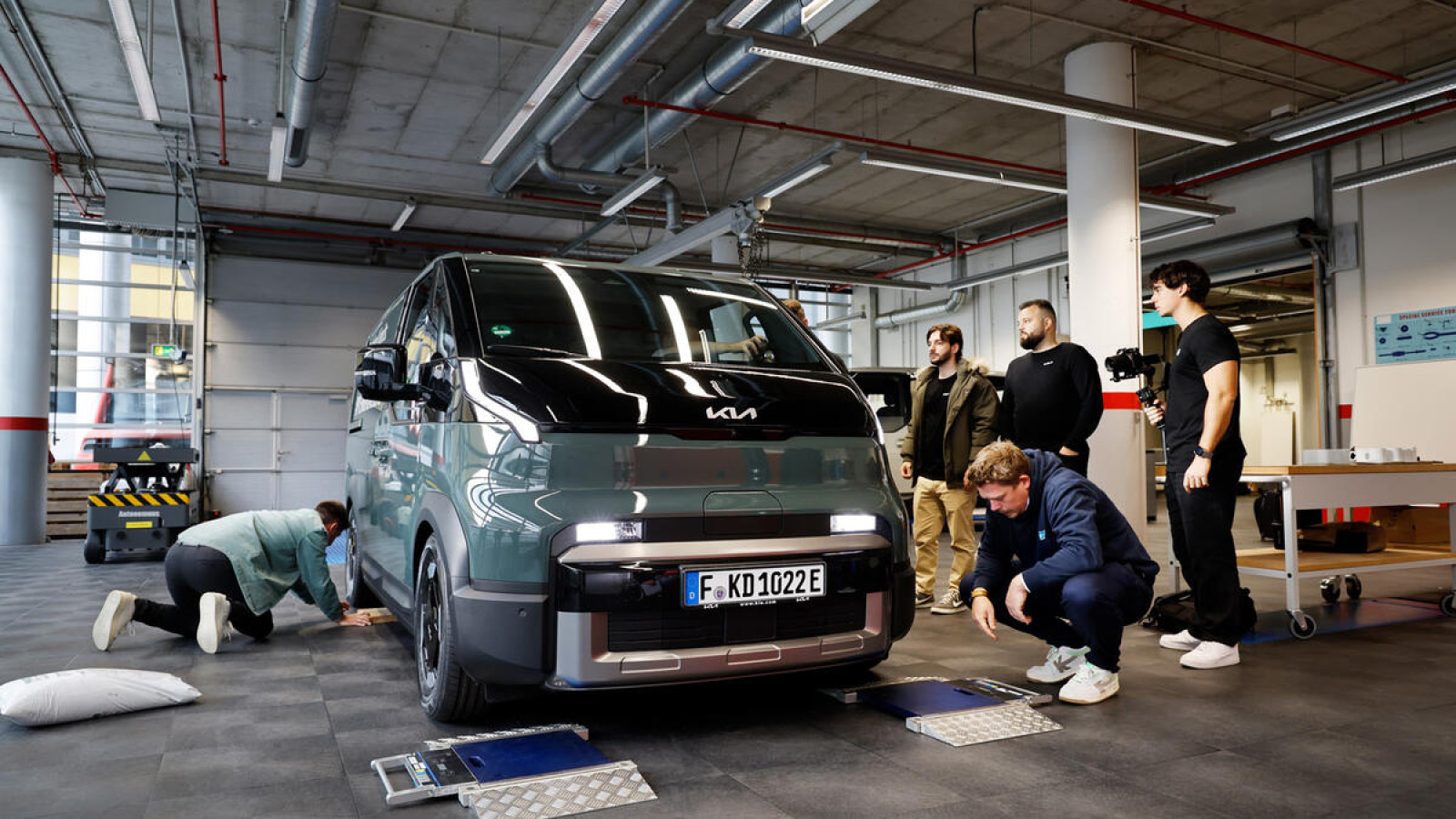
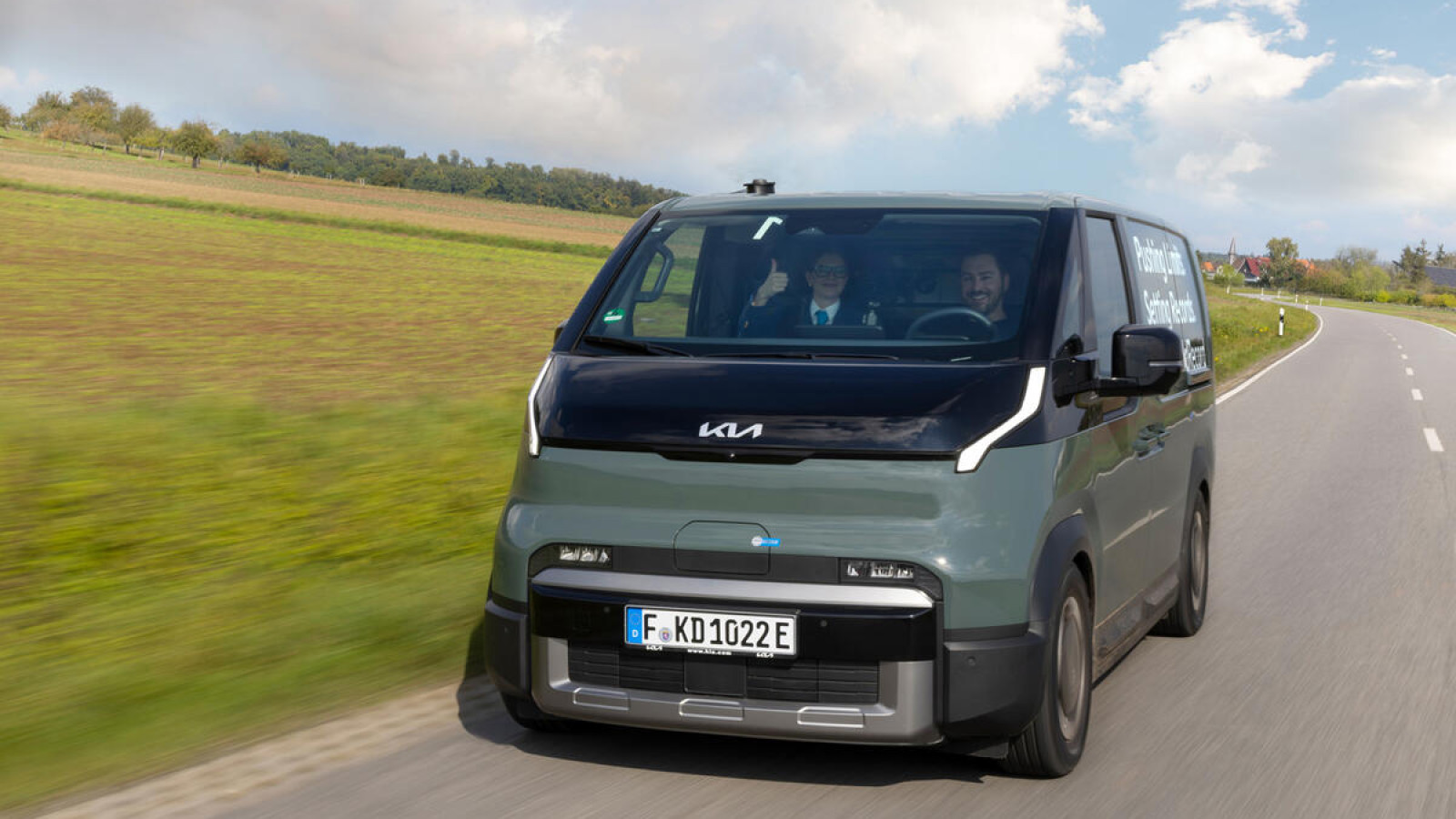

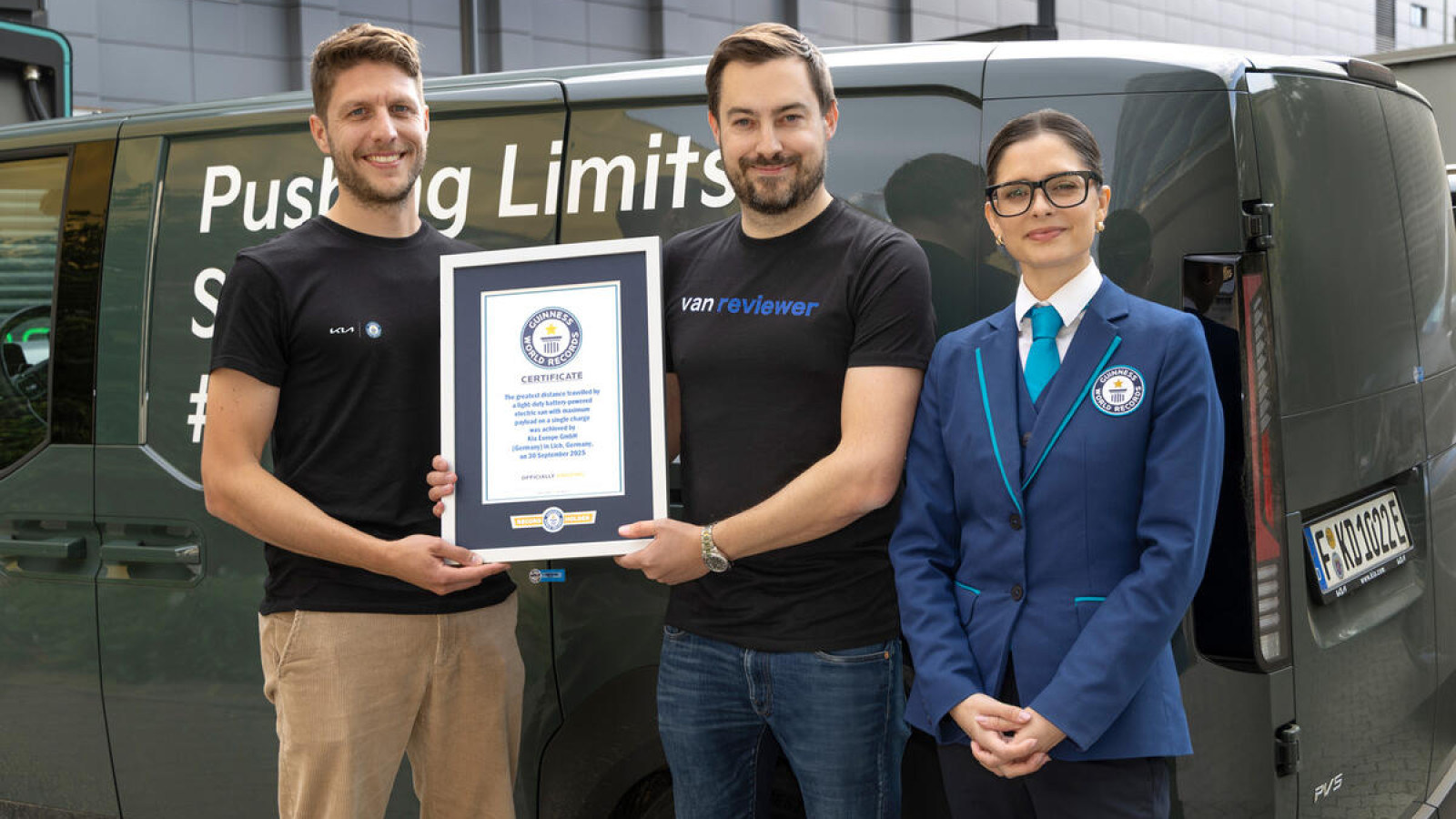
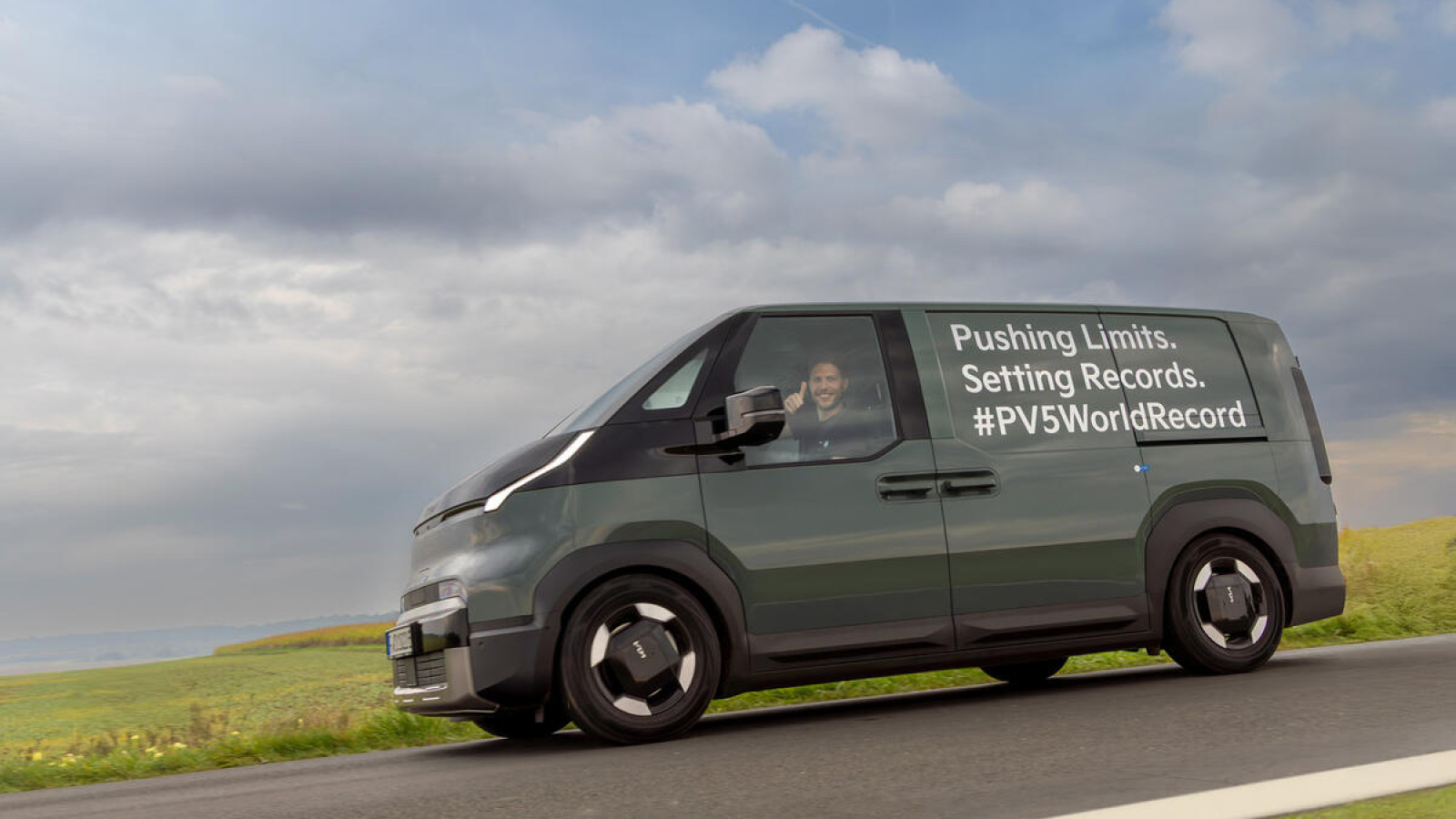
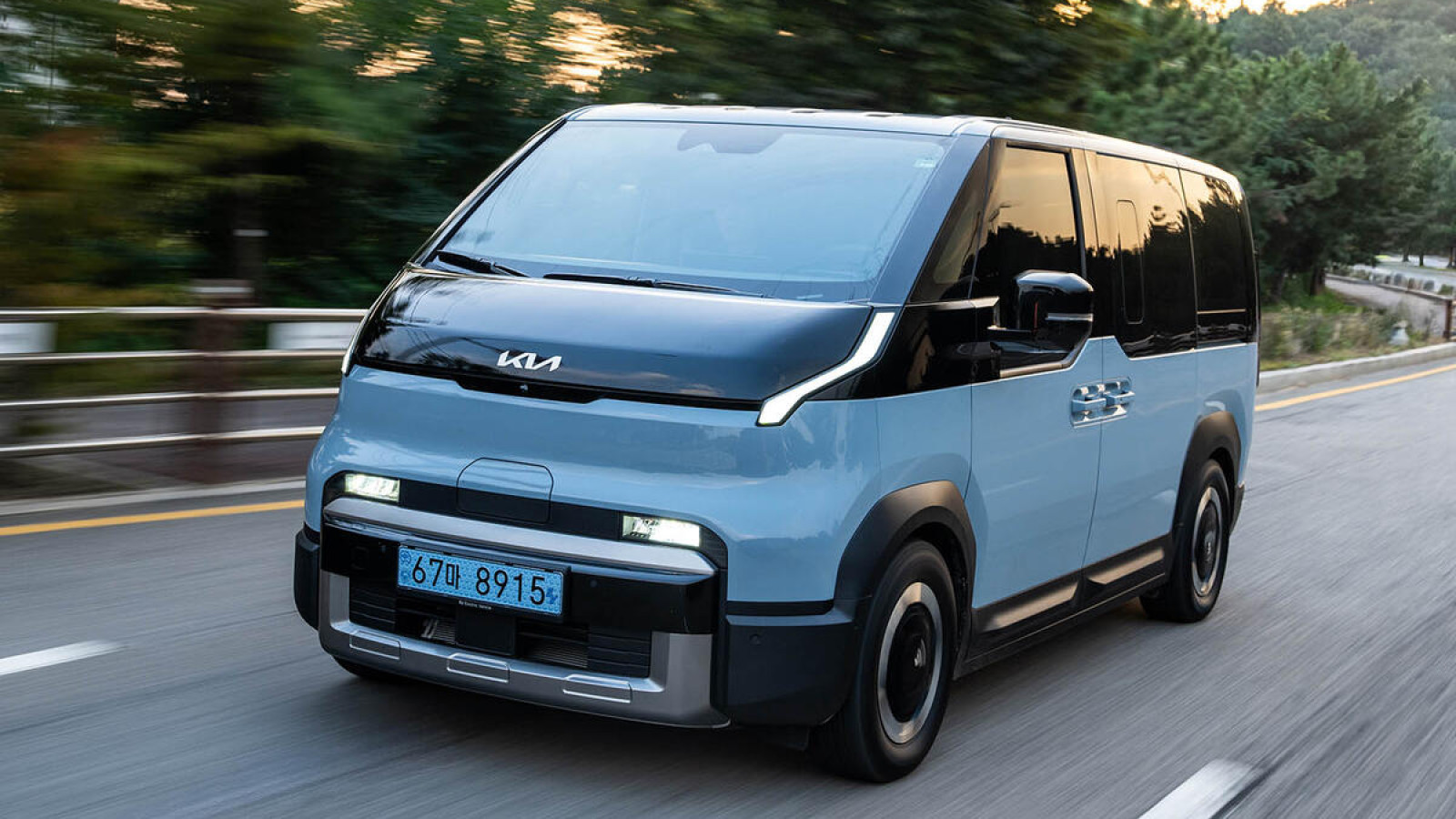
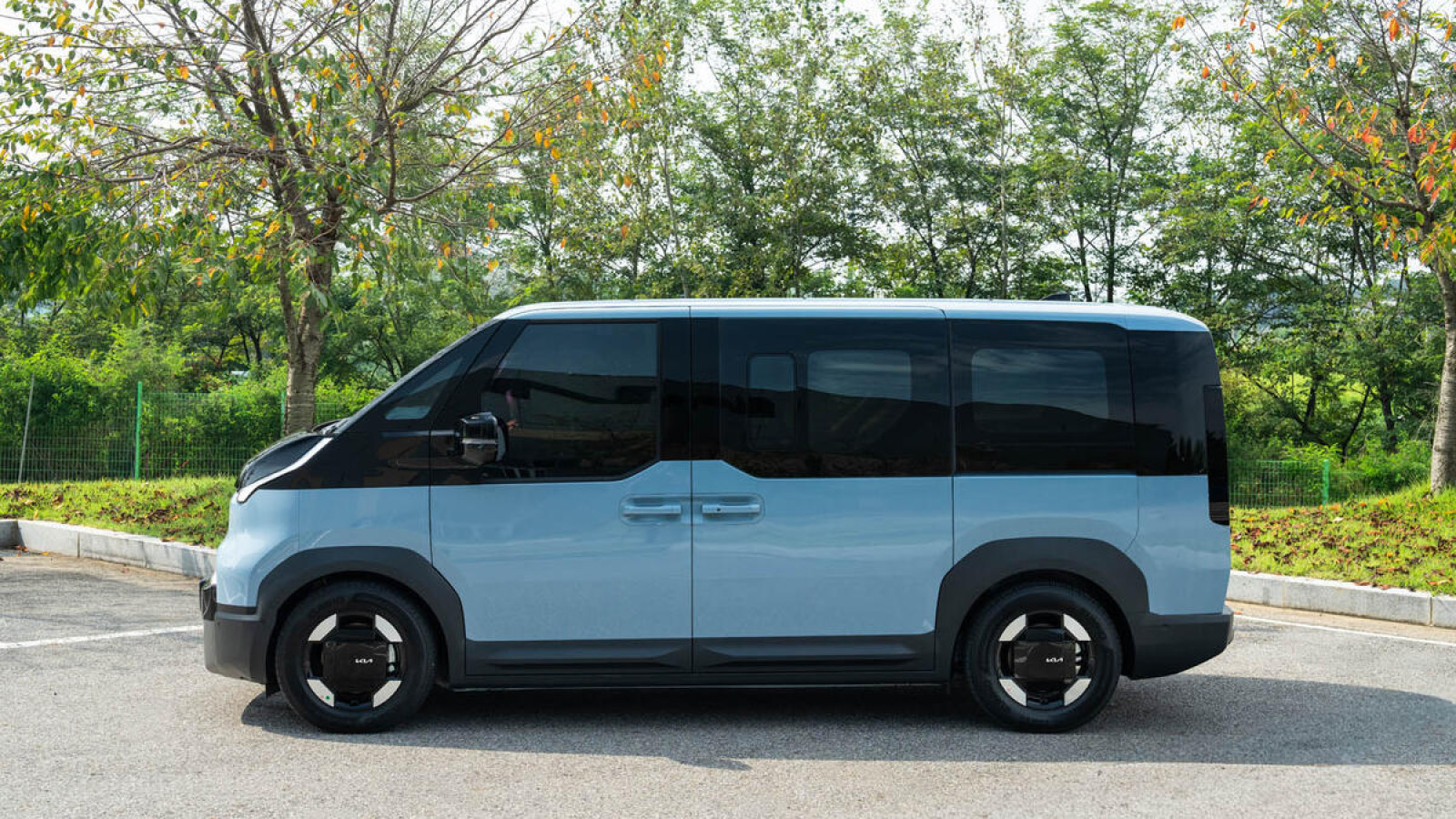
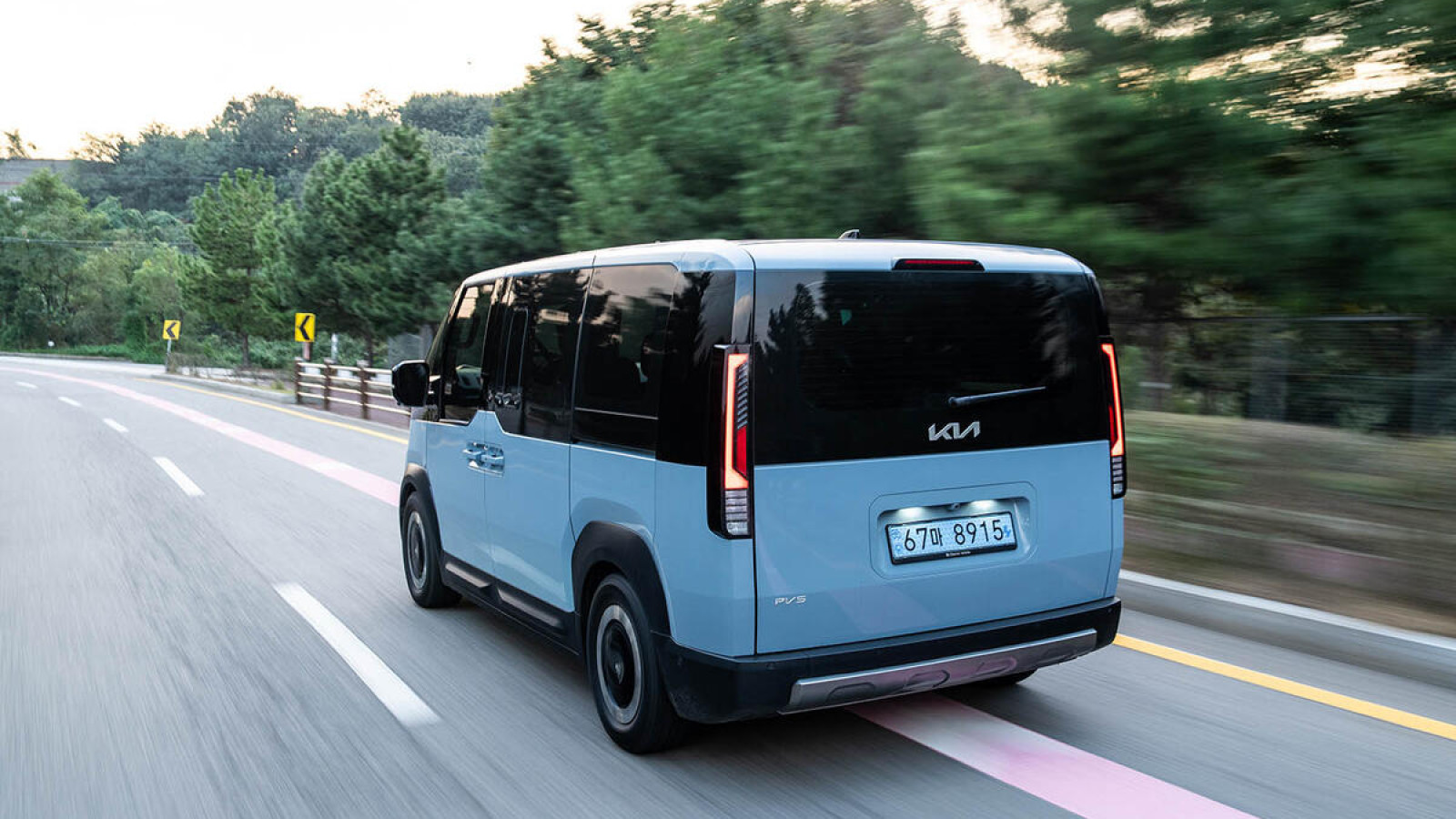
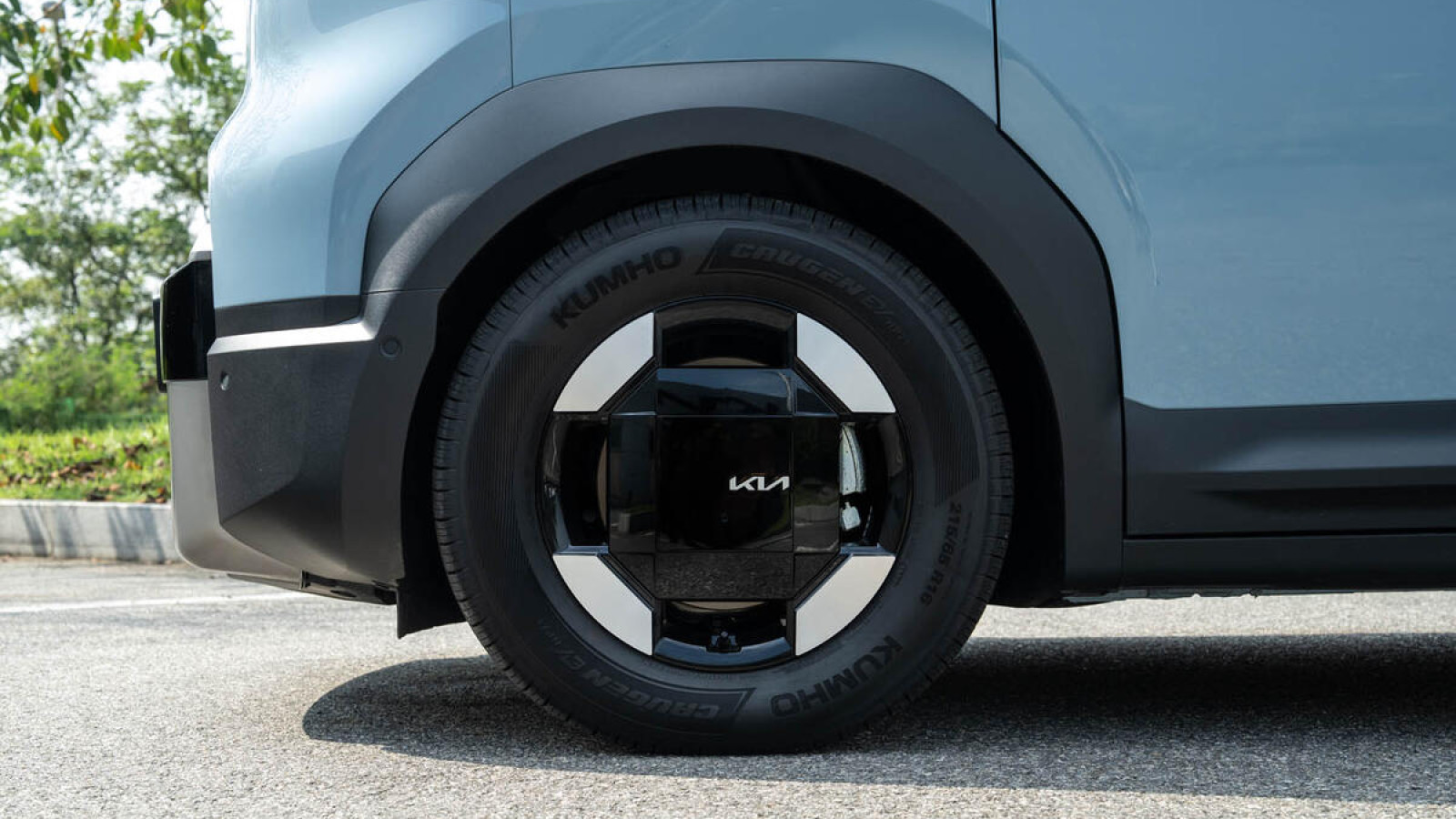
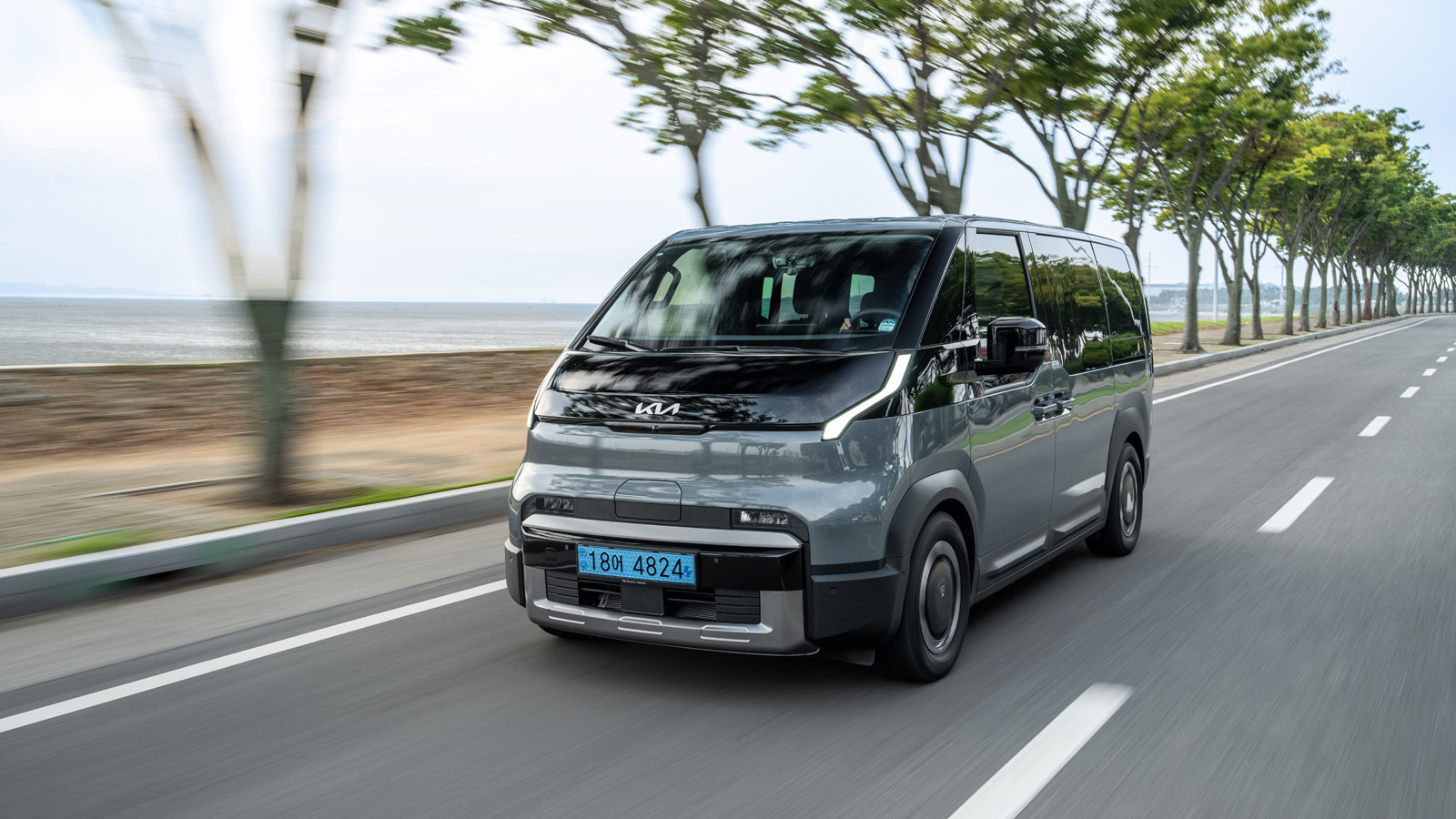
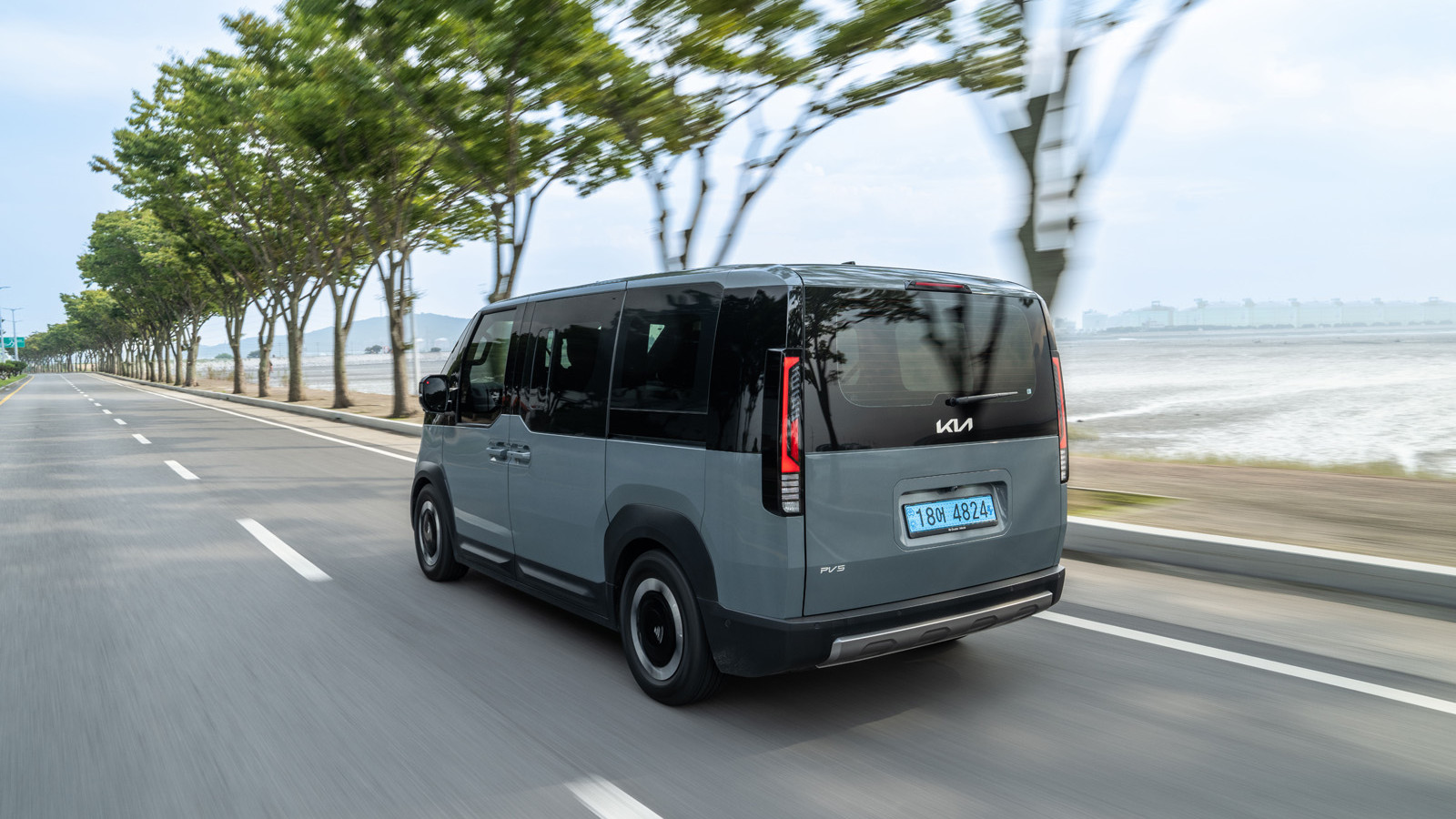
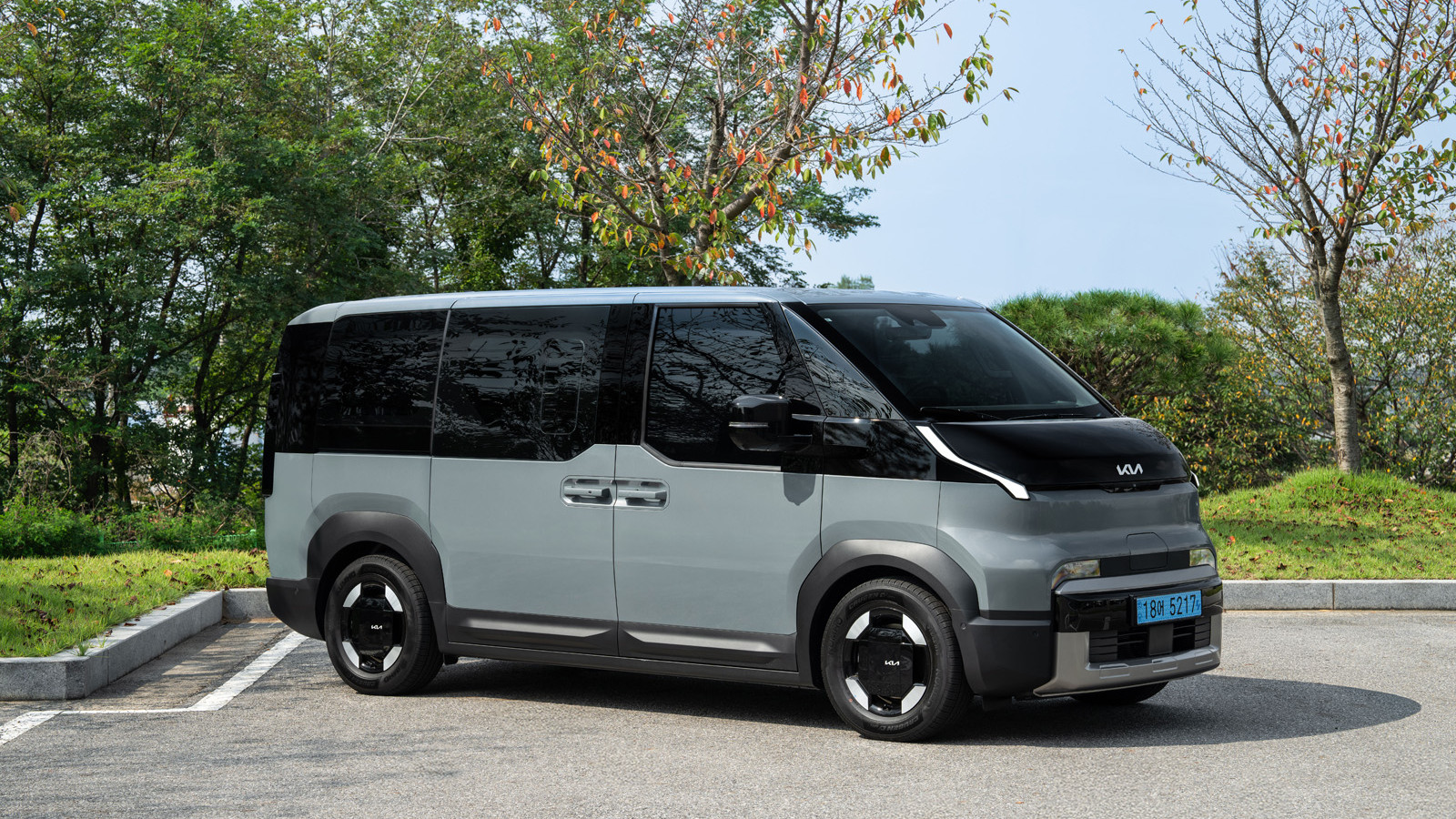
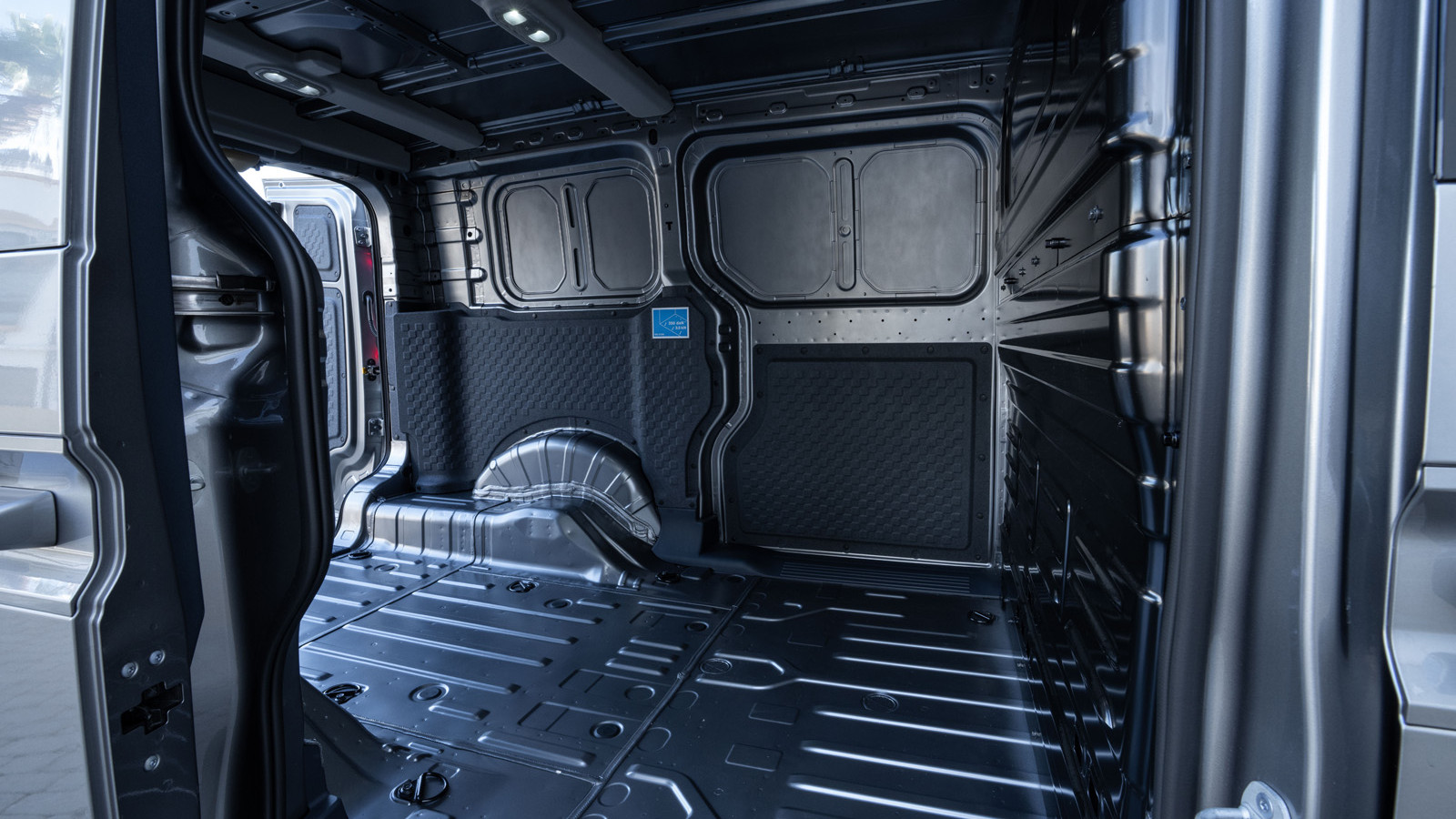
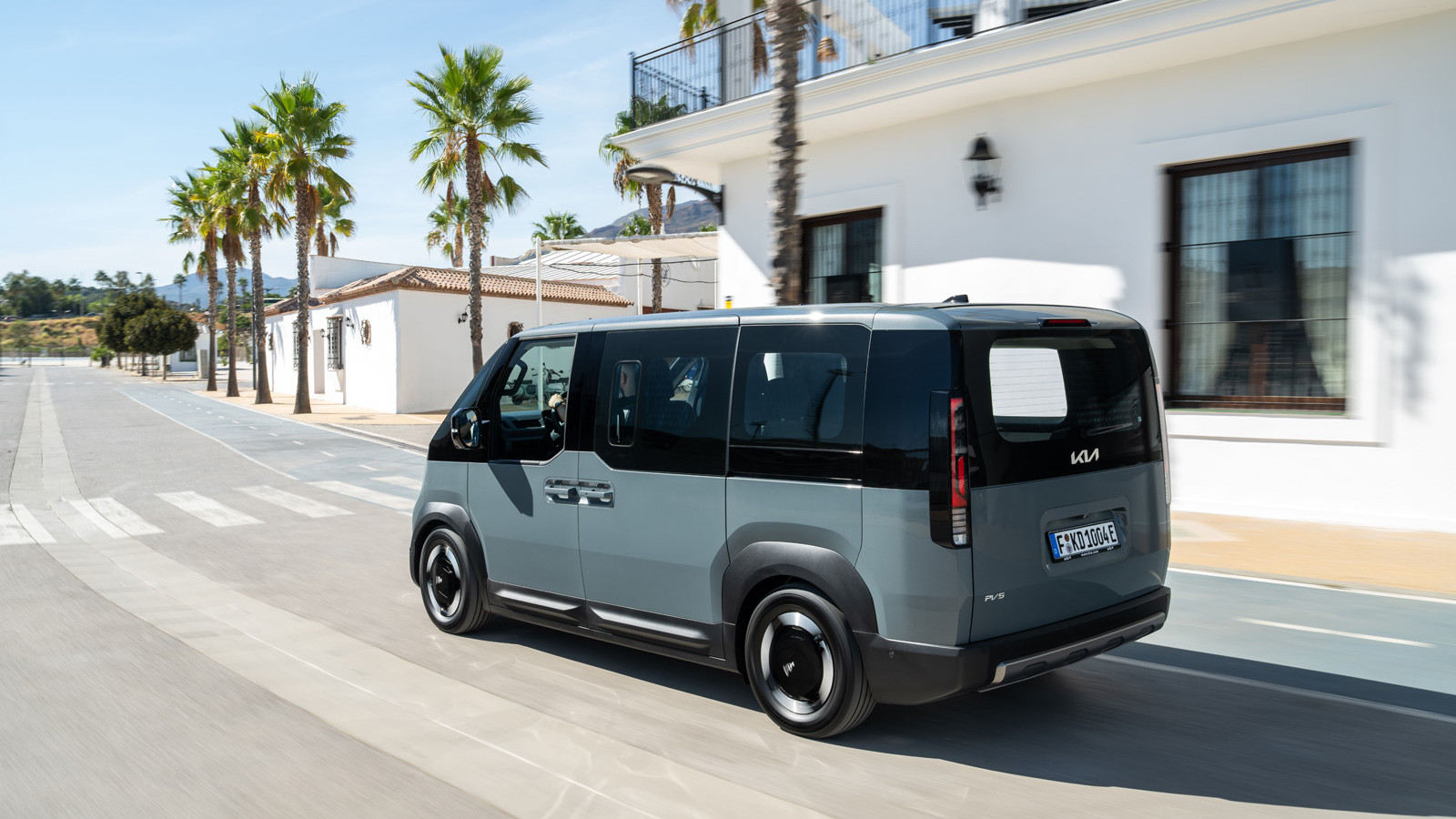
In the rapidly evolving era of electric mobility, new benchmarks are constantly being set and records redefined.
Kia, already a global leader in electric vehicle innovation, has achieved yet another remarkable milestone.
The Korean automaker’s PV5 van has officially set a new world record for the longest distance travelled on a single charge while carrying a full payload.
But how did it do it?
The Kia PV5 covered an impressive 693.38 km (430.84 miles) on a single charge - all while transporting a payload of 690 kg (1521 lb).
The record-breaking run occurred on public roads north of Frankfurt, Germany. The route was specifically selected to simulate the daily operational conditions of a delivery van.
At the wheel was Christopher Nigemeier, a member of the PV5's development team, and Van Reviewer editor George Barrow.
The PV5 completed 11 full laps of a 58.26km (36.2-mile) loop before eventually stopping on the 12th. The 22-hour drive incorporated typical road conditions, including roundabouts, traffic lights, and stop signs, as the route wound through various small towns and villages.
With a combined range of 415km (258 miles) according to the WLTP combined test cycle – which is evaluated without a payload – the PV5 managed to average 6kWh per mile from the 71.2kWh battery.
The van and its drivers also managed to achieve more than double the minimum requirement from Guinness World Records for the attempt, which was set at 300km (186 miles).
Kia's internal tests revealed a minimal impact of payload on range: an additional 100kg reduced the van's range by only about 1.5%.
Following the world record attempt, Marc Hedrich, president and CEO of Kia Europe, commented on the van variant's real-world capability: "The fact that much of our target audience for this van variant could operate for almost two full working days on a single charge speaks volumes."
The Kia PV5, an electric light commercial vehicle (LCV), marks a significant milestone as the first model in Kia's new Platform Beyond Vehicle (PBV) range. This initial offering will be followed by the larger PV7 in 2027 and the PV9 in 2029, with additional models planned for future release.
The Korean carmaker is targeting 250,000 PBV sales globally by 2030. Given Kia’s growth in recent years, don’t bet against that happening.
It will initially be available in two variants: a Cargo van and a Passenger MPV. A Chassis version, allowing for various rear compartment configurations, will be introduced later, along with additional options for both initial variants. Future plans also include a High Roof version and variants of different lengths.
The PV5 Passenger is slightly shorter than the Volkswagen ID Buzz or the Citroën e-Spacetourer. As the only other bespoke electric van-based MPV on the market, the ID Buzz is the obvious rival; however, the Kia is focused on futurism, while the ID Buzz majors on a more retro design.
All versions of the PV5 get a single, front-mounted electric motor with differing power outputs. Standard Range models produce 120bhp and 184lb ft of torque, using a 51.5kWh battery for a range of 294km (183 miles).
Long Range versions can travel 411km (256 miles) using a 71.2kWh battery, with power boosted to 160bhp (torque is unchanged). That range is competitive for an e-LCV, but private buyers might expect more. Both batteries can be charged at speeds of up to 150kW.
Initially, the Passenger will be available with five seats, with six- and seven-seat configurations and a wheelchair-accessible version slated for release next year.
Kia highlights the convenient 399mm step-in height, facilitating easy access to the rear via sliding doors. The Cargo is offered with three doors as standard, featuring a sliding side door on the vehicle’s nearside and a 'barn door' boot.
An extra sliding door on the other side can be added as an option. In some markets, the Cargo will be offered with a smaller 43.3kWh lithium-iron-phosphate (LFP) battery.
The PV5 boasts a spacious interior with ample legroom in both rows. Even with all seats upright, the boot offers a substantial 1311mm length and a capacity of 1330 litres, expanding to 3615 litres with the rear seats folded down.
Inside, the dashboard design is reminiscent of Kia's other models, featuring a 7.0-inch digital instrument display and a 12.9-inch infotainment touchscreen.
This infotainment system runs on custom Android Automotive-based software, making it user-friendly. However, the lack of physical buttons for some functions, such as heating controls, which are integrated into the touchscreen, can be inconvenient.
For cargo needs, the Kia PV5 Cargo in its L2/H2 configuration offers an impressive 5.1m3 capacity. This is a significant 1.5m3 more than the longer ID Buzz Cargo. Additionally, it provides easy loading with a low loading lip of 419mm and a side-loading height of 399mm.

